Abstract
The rate of amino acid incorporation into a specific uterine protein (induced protein band) isolated by gel electrophoresis has been shown to be markedly stimulated within an hour after estrogen administration. Injection of actinomycin D (8 mg/kg) prior to estrogen blocks the synthesis of induced protein. The accumulation of the product of the actinomycin D-sensitive step (induced protein band RNA) is significant 15 minutes after estrogen, and its synthesis would appear to be initiated as soon as the estrogen-receptor complex reaches the nucleus. Blocking protein synthesis with puromycin or cycloheximide did not affect the accumulation of induced protein band RNA, indicating that this is one of the earliest macromolecular synthetic events to occur after estrogen administration.
Full text
PDF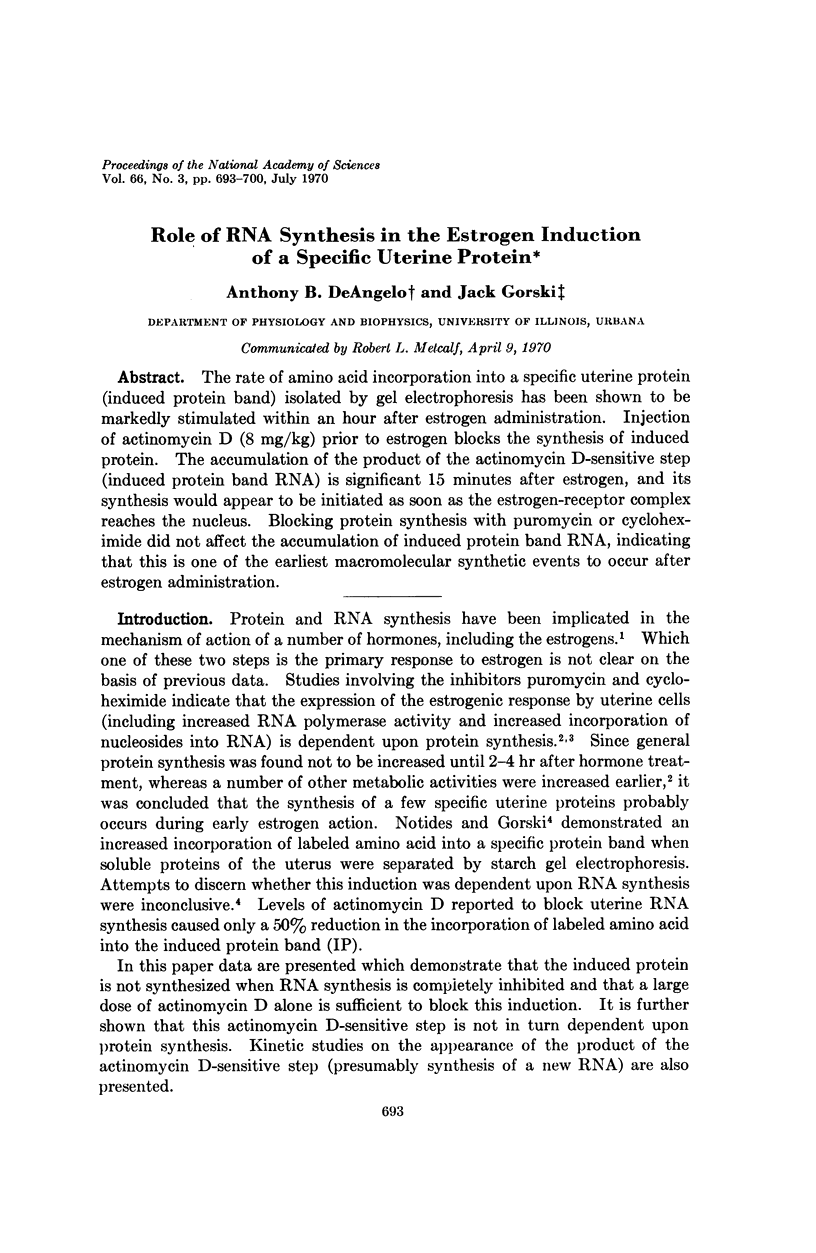
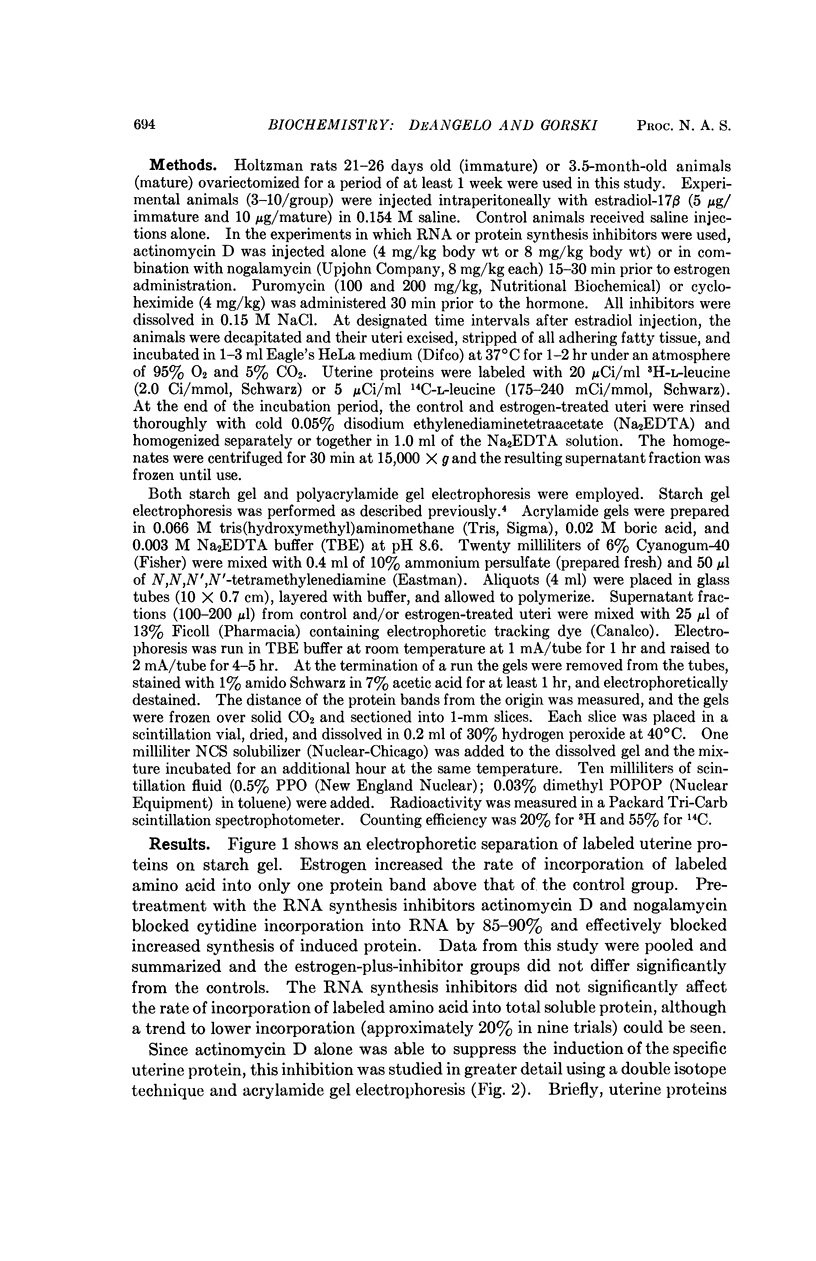
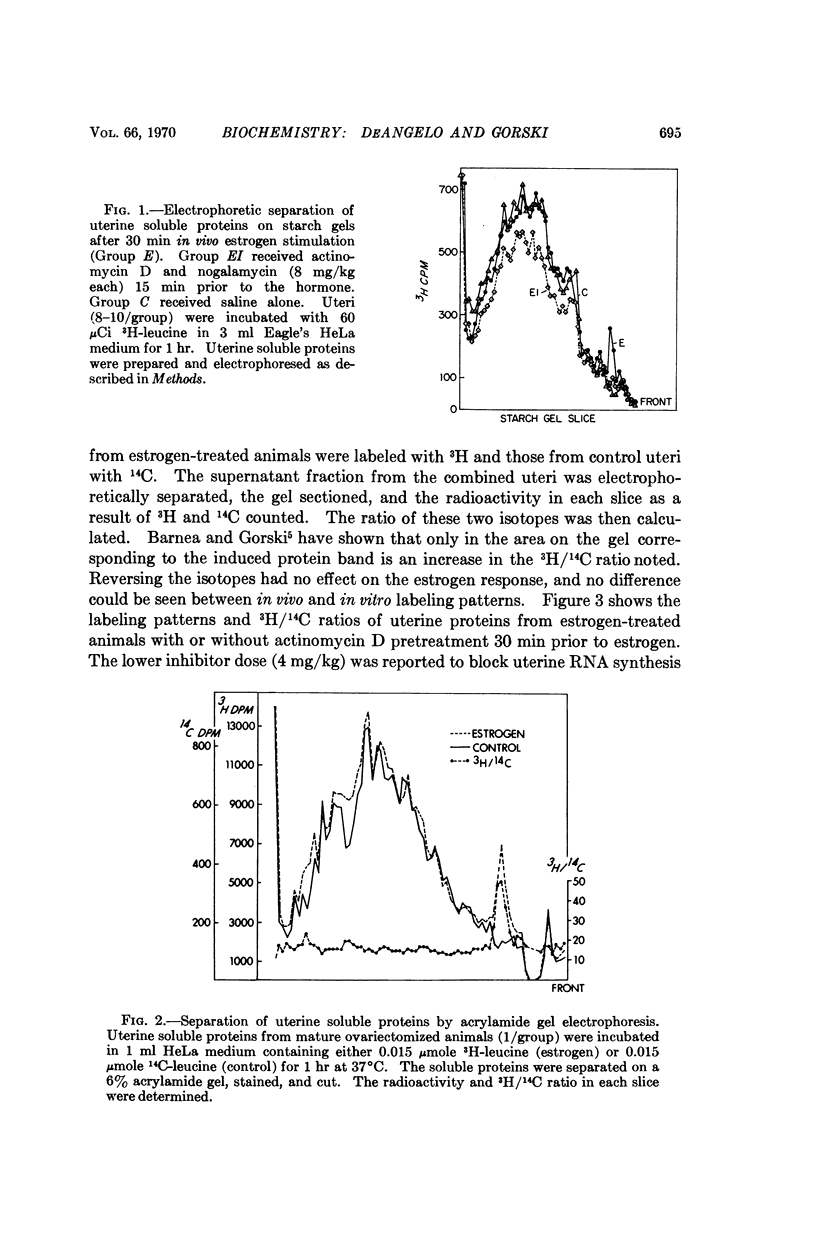
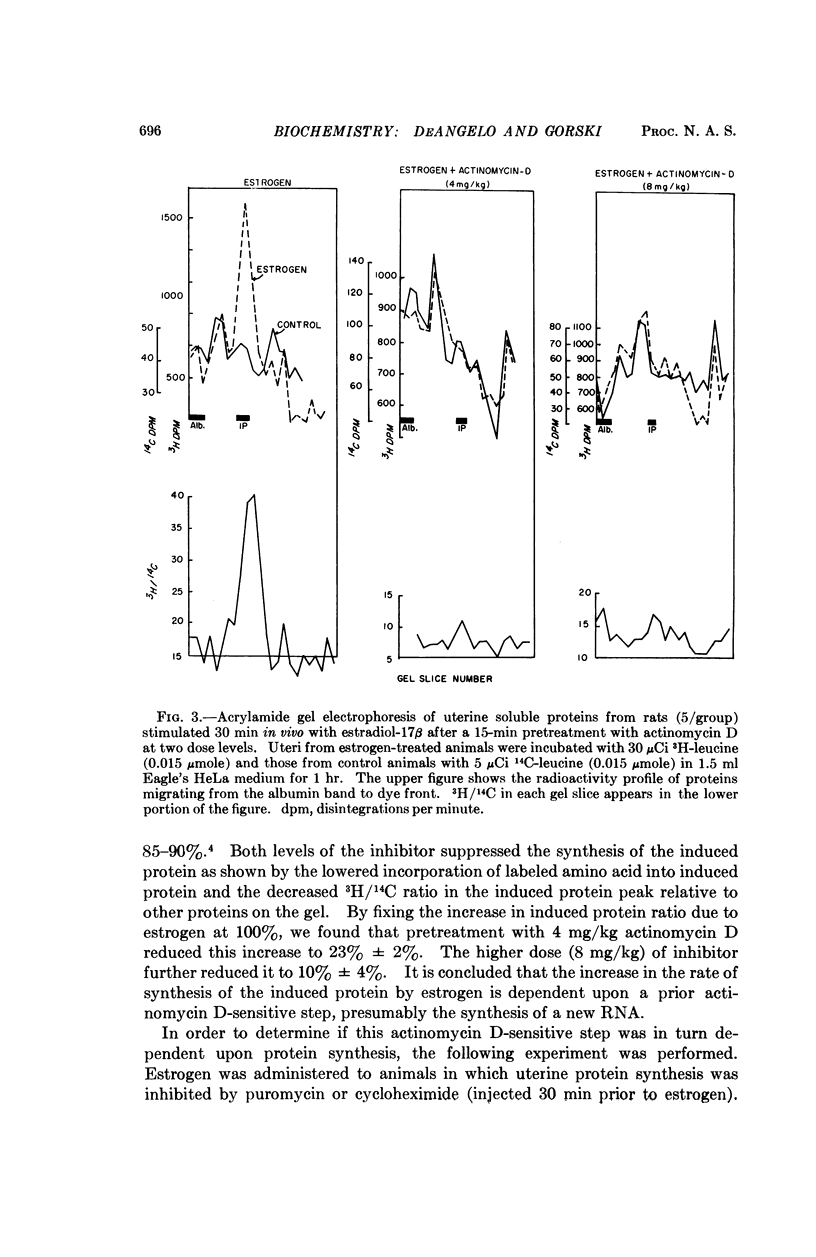
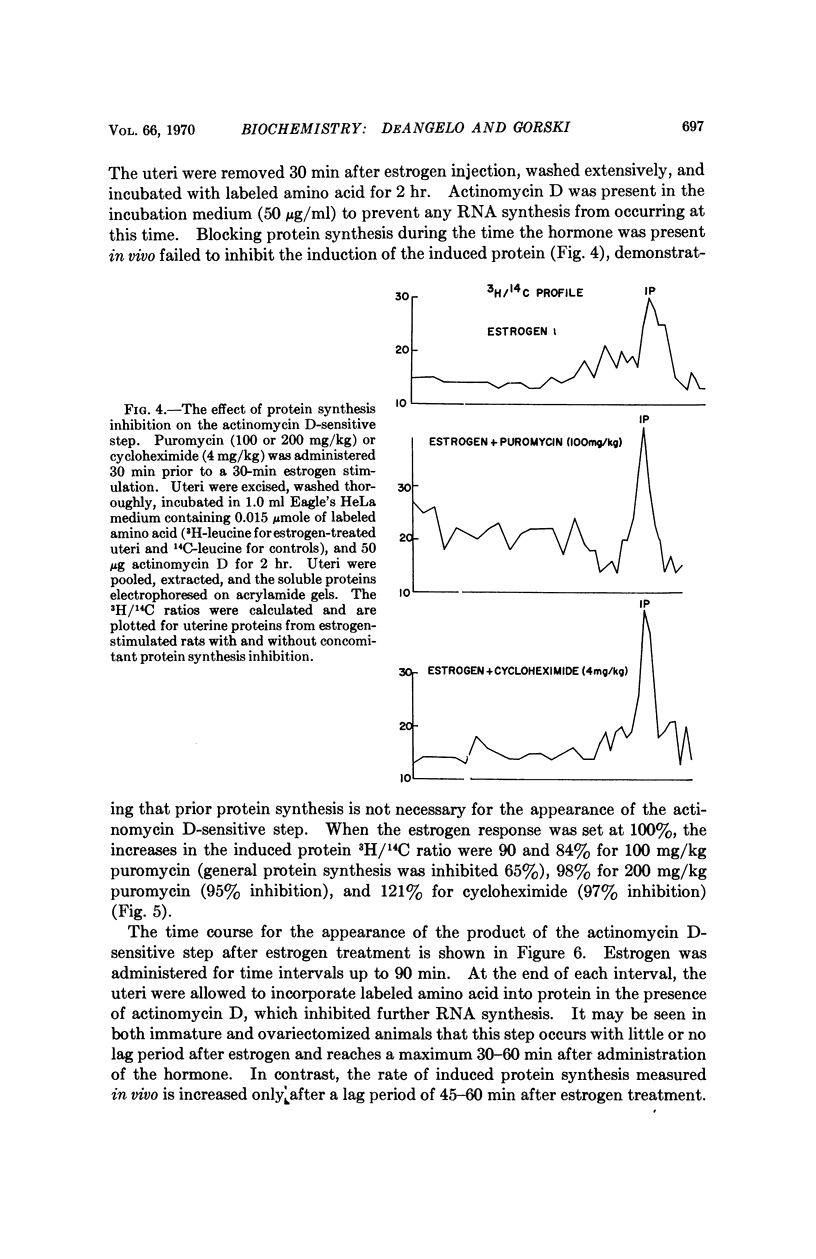
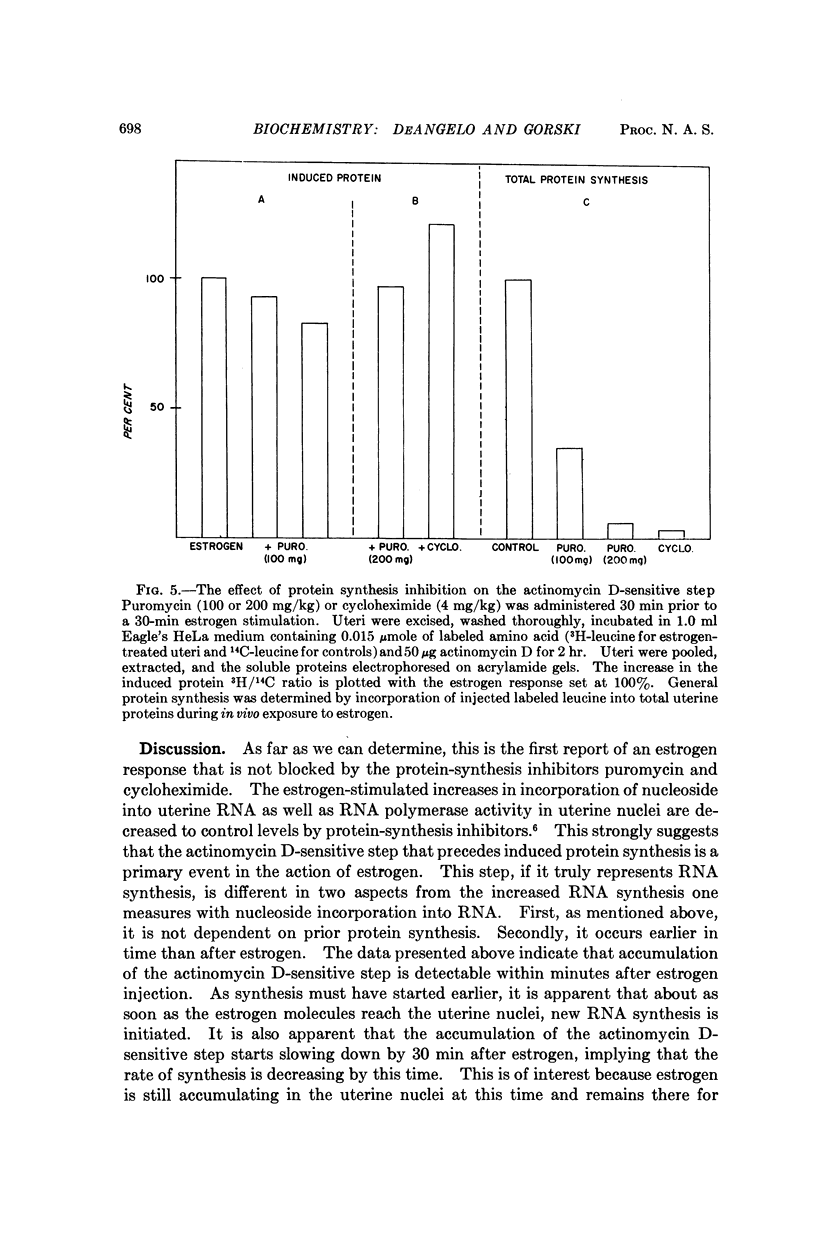
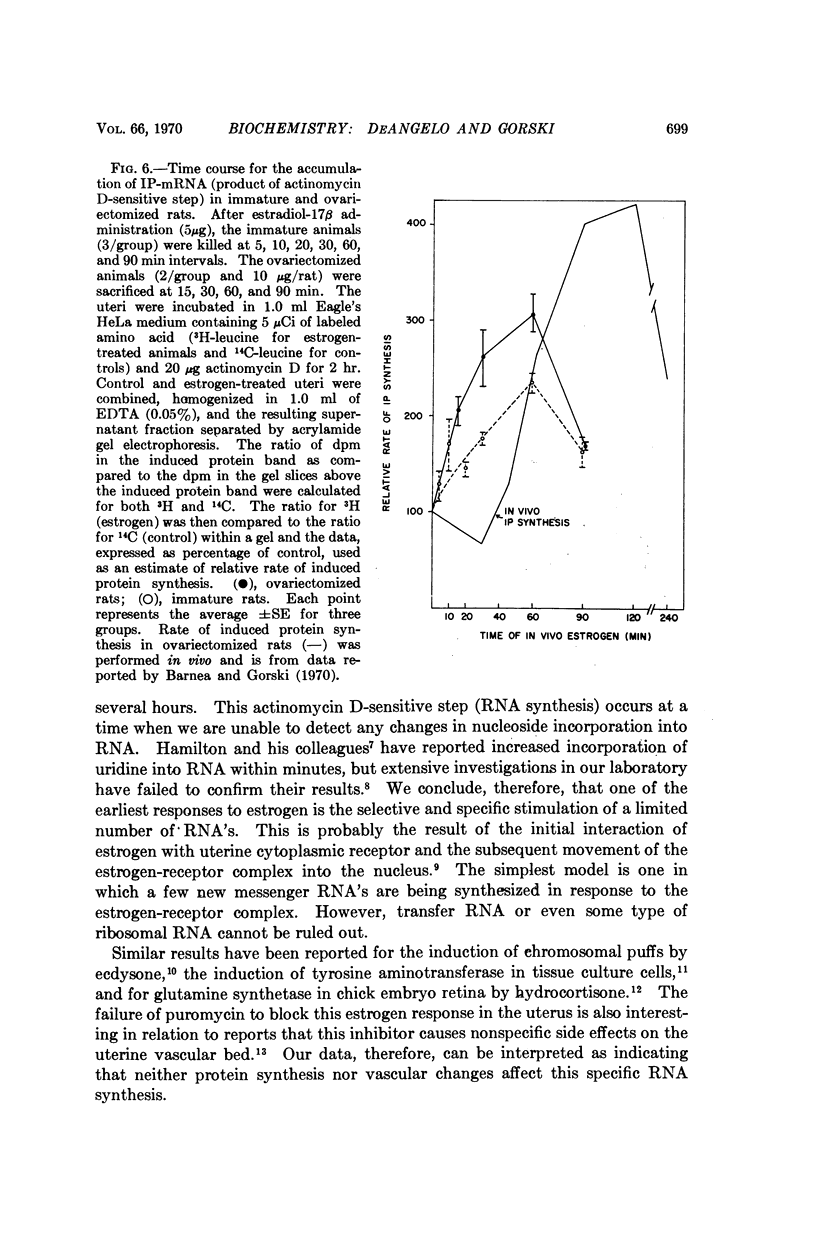
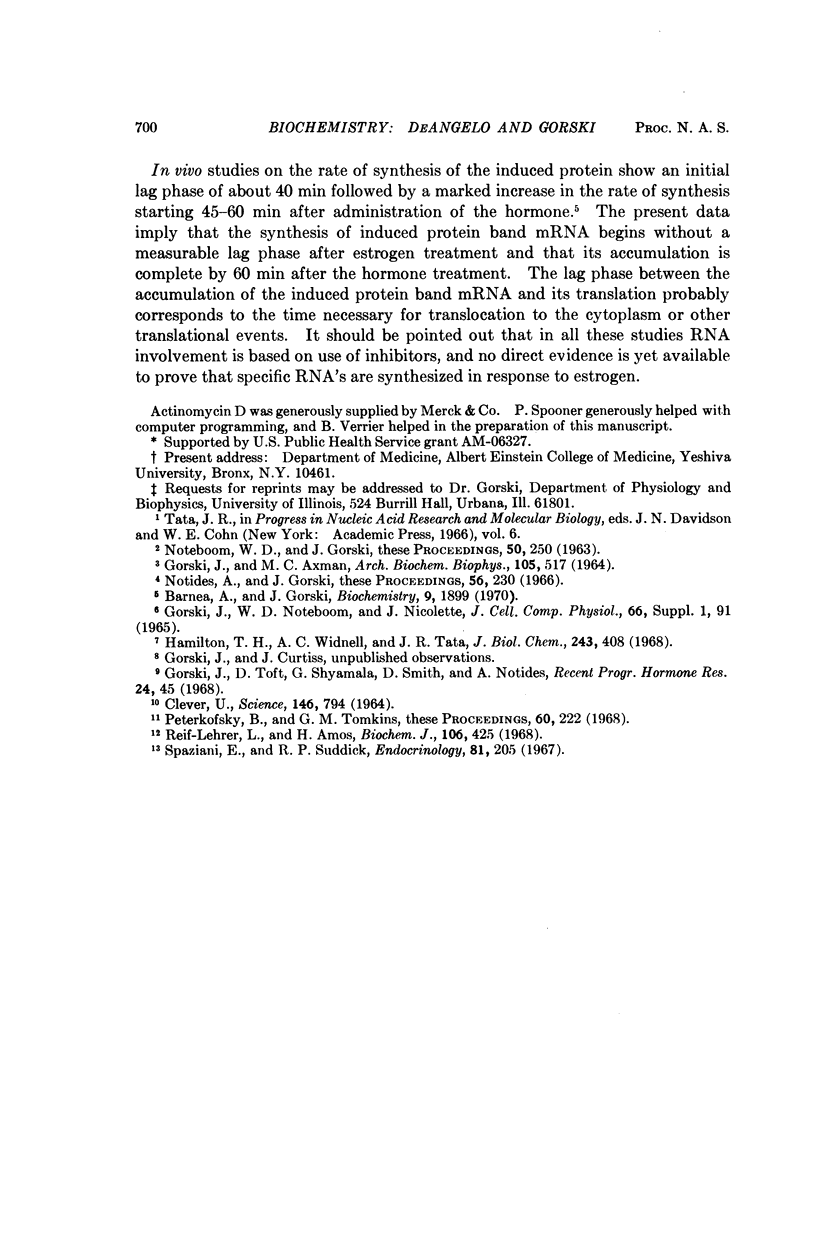
Selected References
These references are in PubMed. This may not be the complete list of references from this article.
- Barnea A., Gorski J. Estrogen-induced protein. Time course of synthesis. Biochemistry. 1970 Apr 28;9(9):1899–1904. doi: 10.1021/bi00811a006. [DOI] [PubMed] [Google Scholar]
- CLEVER U. ACTINOMYCIN AND PUROMYCIN: EFFECTS ON SEQUENTIAL GENE ACTIVATION BY ECDYSONE. Science. 1964 Nov 6;146(3645):794–795. doi: 10.1126/science.146.3645.794. [DOI] [PubMed] [Google Scholar]
- GORSKI J., AXMAN M. C. CYCLOHEXIMIDE (ACTIDIONE) INHIBITION OF PROTEIN SYNTHESIS AND THE UTERINE RESPONSE TO ESTROGEN. Arch Biochem Biophys. 1964 Jun;105:517–520. doi: 10.1016/0003-9861(64)90045-1. [DOI] [PubMed] [Google Scholar]
- Hamilton T. H., Widnell C. C., Tata J. R. Synthesis of ribonucleic acid during early estrogen action. J Biol Chem. 1968 Jan 25;243(2):408–417. [PubMed] [Google Scholar]
- NOTEBOOM W. D., GORSKI J. AN EARLY EFFECT OF ESTROGEN ON PROTEIN SYNTHESIS. Proc Natl Acad Sci U S A. 1963 Aug;50:250–255. doi: 10.1073/pnas.50.2.250. [DOI] [PMC free article] [PubMed] [Google Scholar]
- Notides A., Gorski J. Estrogen-induced synthesis of a specific uterine protein. Proc Natl Acad Sci U S A. 1966 Jul;56(1):230–235. doi: 10.1073/pnas.56.1.230. [DOI] [PMC free article] [PubMed] [Google Scholar]
- Peterkofsky B., Tomkins G. M. Evidence for the steroid-induced accumulation of tyrosine-aminotransferase messenger RNA in the absence of protein synthesis. Proc Natl Acad Sci U S A. 1968 May;60(1):222–228. doi: 10.1073/pnas.60.1.222. [DOI] [PMC free article] [PubMed] [Google Scholar]
- Reif-Lehrer L., Amos H. Hydrocortisone requirement for the induction of glutamine synthetase in chick-embryo retinas. Biochem J. 1968 Jan;106(2):425–430. doi: 10.1042/bj1060425. [DOI] [PMC free article] [PubMed] [Google Scholar]
- Spaziani E., Suddick R. P. Hexose transport and blood flow rate in the uterus: effects of estradiol, puromycin and actinomycin D. Endocrinology. 1967 Aug;81(2):205–212. doi: 10.1210/endo-81-2-205. [DOI] [PubMed] [Google Scholar]


